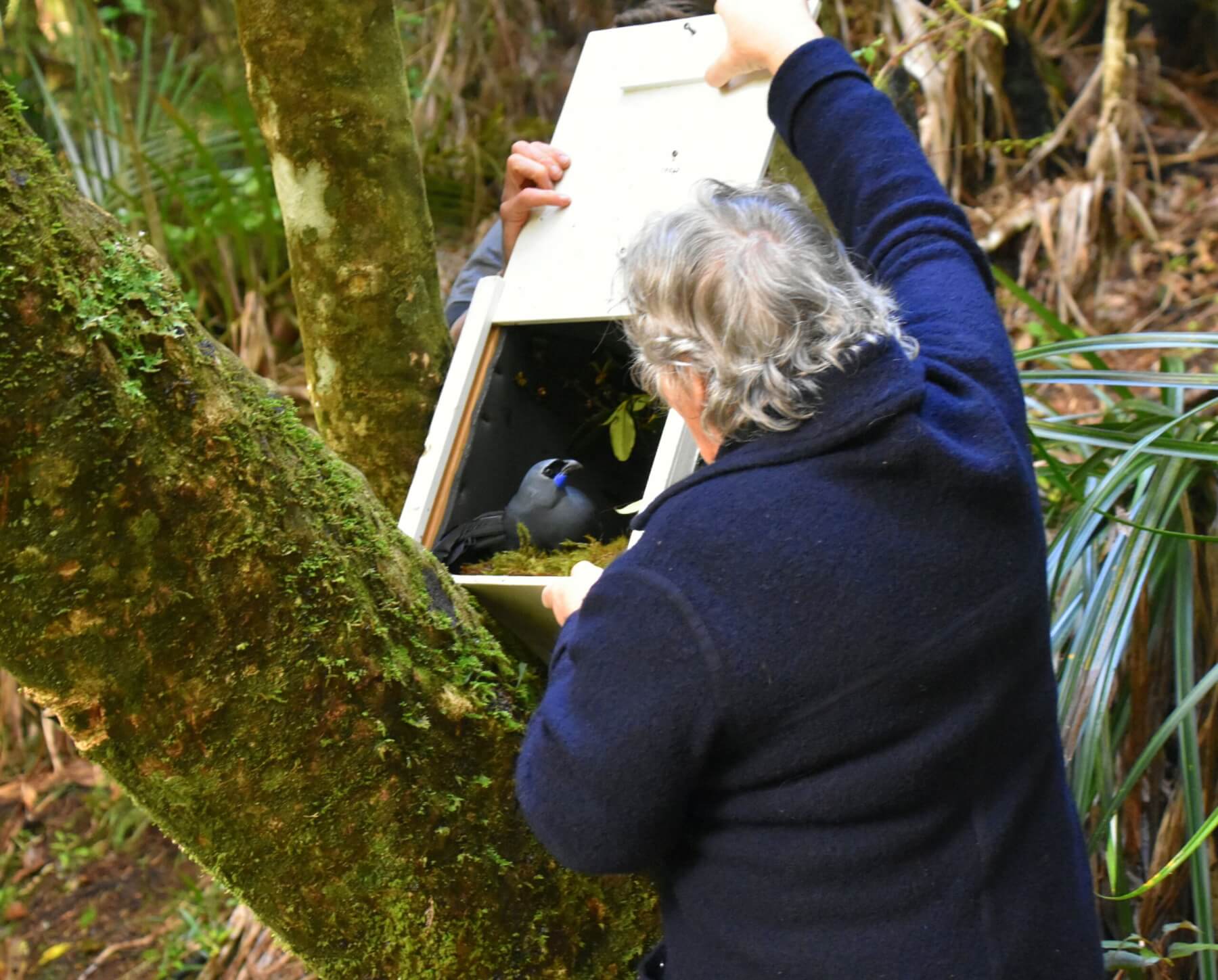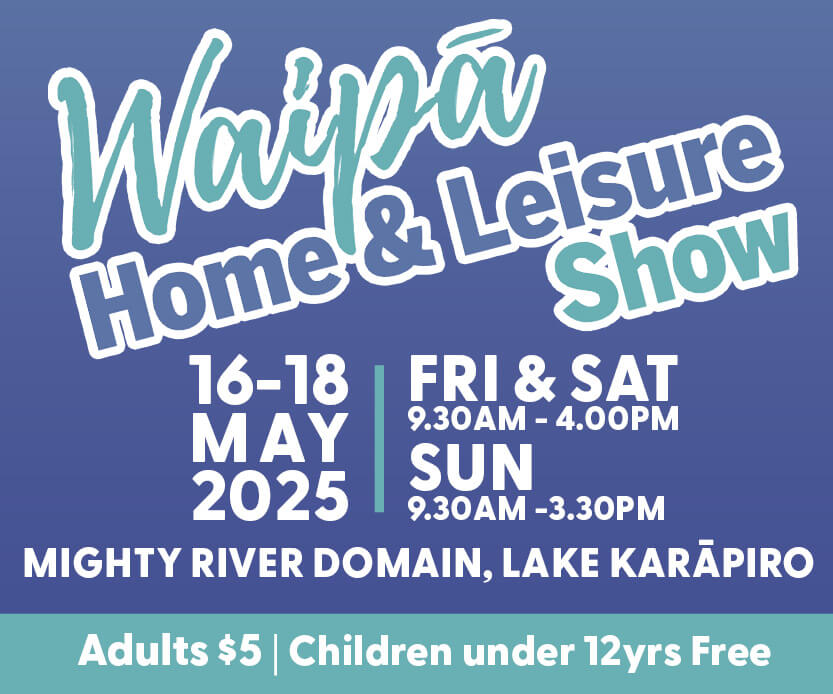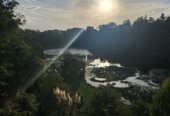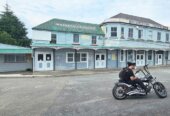A group dedicated to restoring Mt Pirongia’s biodiversity says a Waikato Regional Council grant is “life blood”.
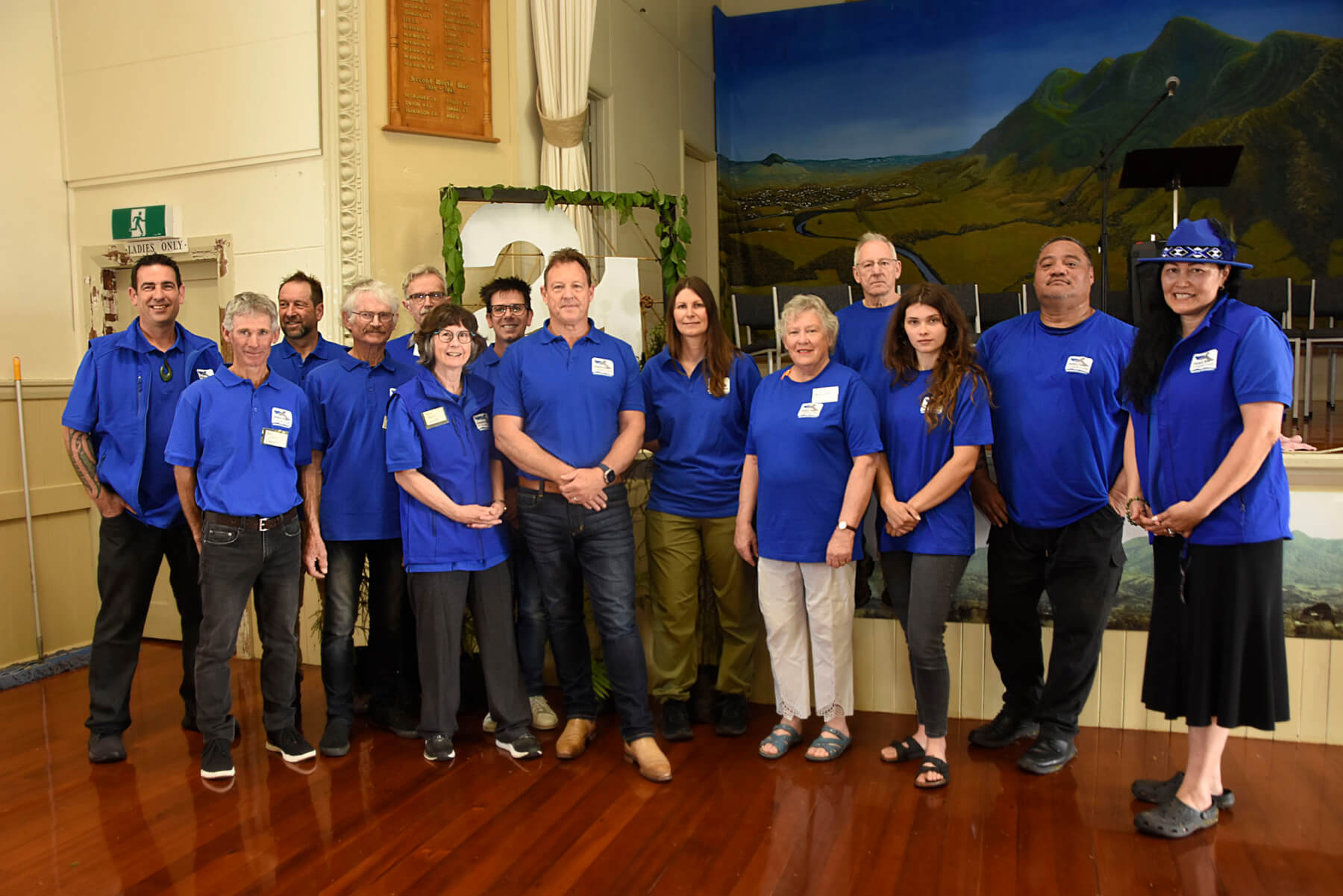
Pirongia Te Aroaro o Kahu Restoration Society members, from left: Gavin Davey, Ken Allen, Gerry Kessels, Steve McClunie, Selwyn June, Jane Sinclair, Matt Hancock (past treasurer) Kevin Christie (chairperson), Cara Hansen, Dianne June (secretary), Brian Bowell, Halle Aish, John Biddle (Ops coordinator Tainui) Tiaki Ormsby (Ngāti Apakura). Photo: Isla Trapski
Pirongia Te Aroaro o Kahu Restoration Society will receive $303,000 over three years towards its Kia Mau Tonu Kaitiakitanga o Pirongia project.
Established in 2002 as a community initiative to enhance native flora and fauna on Pirongia, the society is expanding pest animal control operations to protect a spreading population of kōkako.
The maunga is the highest in the Waikato at 959 metres and Pirongia Forest Park covers 17,000ha and contains the largest tract of unbroken native forest left in the Waikato.
Society chair Kevin Christie said the aim is to bring the maunga and ngahere (forest) back to life.
He said kōkako had been extinct on the maunga for 20 years – the last survivors were captured in 1995, and the bird was listed as a threatened species by DoC.
“After a series of kōkako translocations back to the maunga they now have an established population. Their conservation status is listed as ‘nationally increasing’ in the North Island which means we no longer received direct funding from DoC for our work related to the species.”
Among the of work the society’s hundreds of volunteers undertakes includes protecting the threatened native flora including Dactylanthus (wood rose), running pest and predator control operations, reintroducing native mistletoe back, bat monitoring, eDNA work, planting, and working towards opening up a heritage school building which will act as an enviro centre for education purposes.
The funding comes on the back of Waikato Regional Council increasing their natural heritage rate per property to $15 a year. It used to be $5.80.
“We’re really grateful the council has the Natural Heritage Fund there as a vehicle to help organisations like ours. This money is life blood for us. And it also means that we can use it as a lever to go to other organisations to seek further support as funders don’t want to see just one single source of income,” Christie said.
The regional council granted $1.34 million from the fund towards four landscape scale environmental projects. Funding was also provided for projects at nearby Mount Karioi, northern Coromandel Peninsula and the Kaimai-Mamaku ranges.
The restoration society is finalising their 20-year strategy which sets out aspirations for the maunga under “Our maunga, our mahi, our heart, our home” and will guide their work until 2045.
Find out more about Pirongia Te Aroaro o Kahu 
Okahukura Volunteers



